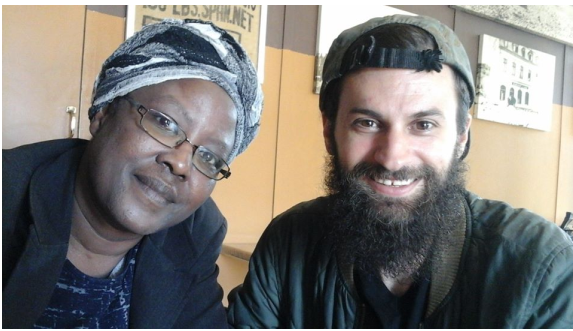 Last week’s Students in African Studies Association (SASA) Wednesday lecture featured Christopher Muntzner (University of Florida). His talk, “Nouns and Person-Gender-Number Markers in Khoekhoe,” reflected on his preliminary dissertation research. Khoekhoe is a Khoisan language spoken by about 250,000 people, primarily in Namibia. Muntzner’s research is located in the small town of Lüderitz in the ǁKaras region of southern Namibia. He worked with two Khoekhoe speakers to collect primary data for his project and intends to share all data with the Endangered Language Archive (ELAR).
Last week’s Students in African Studies Association (SASA) Wednesday lecture featured Christopher Muntzner (University of Florida). His talk, “Nouns and Person-Gender-Number Markers in Khoekhoe,” reflected on his preliminary dissertation research. Khoekhoe is a Khoisan language spoken by about 250,000 people, primarily in Namibia. Muntzner’s research is located in the small town of Lüderitz in the ǁKaras region of southern Namibia. He worked with two Khoekhoe speakers to collect primary data for his project and intends to share all data with the Endangered Language Archive (ELAR).
Data collection focused on two topics: Nouns modified by relative clauses and person-gender-number markers in regard to their distribution and relationship to relative clauses. Muntzner noted that current literature on Khoekhoe lacks a fundamental understanding of relative clauses and the role person-gender-number markers play in relative clauses. His research seeks to clarify these gaps. Muntzner’s preliminary results suggest that Khoekhoe has two main types of relative clauses: postnominal and prenominal. Postnominal relative clauses occur primarily with non-restrictive relative clauses while prenominal relative clauses occur with restrictive clauses only. He also found that person-gender-number markers occur on nouns, on postnominal relative clauses agreeing with it’s unique antecedent or as a type of appositive relative clause construction, or as subject agreement markers in indicatives (except when the subject is fronted) and relative clauses. He intends to continue working with the same two Khoekhoe speakers on new questions and examples for his dissertation work. In the future, he would like to expand his research to study other endangered Khoisan languages.